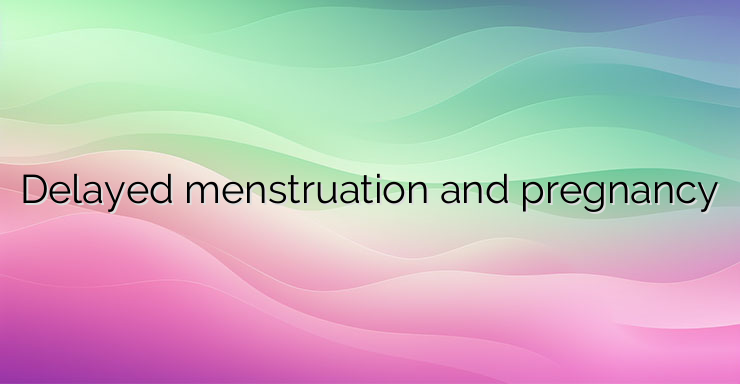A late period is usually the first sign of pregnancy. In certain circumstances, this can really be misleading because many elements can disrupt the menstrual cycle. With a regular cycle, late menstruation is defined as when it does not occur within 3 to 5 days after the expected date. A delay of 1 or 2 days cannot be considered a delay in menstruation, since ovarian cycles depend on subtle mechanisms. With an irregular cycle, it is more difficult to detect the delay of menstruation. A week late can be considered a late period. Late menstruation – the first sign of pregnancy In women with regular periods, late menstruation is usually the first sign of pregnancy. If the egg has not been fertilized, the corpus luteum, the lining of the follicle left after ovulation, degenerates, causing a drop in progesterone levels. This drop in turn leads to the release of excess blood stored in the lining of the uterus – menstruation occurs. On the other hand, if the egg has been fertilized, the corpus luteum continues to function and secretes a hormone called human chorionic gonadotropin, which will support the uterine lining for implantation of the egg. Then there is a lack of menstruation or “amenorrhea”. Other small signs may appear with the onset of pregnancy: morning sickness, aversion to food, heaviness in the lower abdomen, swelling of the breasts, drowsiness and others. However, these signs are very fickle and different for each woman, and their expression varies greatly, so they can sometimes go unnoticed. In some women, the implantation of the egg causes light bleeding that can be mistaken for a period when the pregnancy is still early. Late cycle and negative pregnancy test To confirm pregnancy, it is recommended to take a qualitative urine pregnancy test. These tests are based on the detection in the urine of the hormone human chorionic gonadotropin – a hormone secreted by the corpus luteum immediately after implantation of the egg – approximately 7 days after fertilization. The pregnancy test can be done from the first day of the period delay, and with some so-called early tests – 3 to 4 days before the expected date of menstruation. The test should not be performed too early to avoid a “false negative”. Human chorionic gonadotropin detection thresholds are based on an average cycle of 28 days with ovulation on day 14. However, cycle length, ovulation date and human chorionic gonadotropin levels can vary from woman to woman, so the hormone may not be detected on the expected date of menstruation because the human chorionic gonadotropin level is then too low. Therefore, it is recommended to wait a few days after a missed period before taking a pregnancy test to avoid the risk of a false negative result.If after a negative test menstruation has not yet occurred, it is recommended to take a new test. If the test is again negative and in the absence of menstruation, it is recommended to consult a specialist. References: https://www.passeportsante.net/famille/projet-enfant?doc=retard-regles-grossesse


Leave a Reply